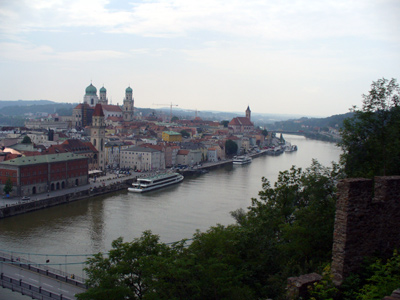Passau
The city of Passau lies at the confluence of the Danube, Inn and Ils rivers. The Ils is the small river coming in from the top, the Danube is in the center and the Inn comes in at the bottom of this map. Note the differences in color at the confluence.
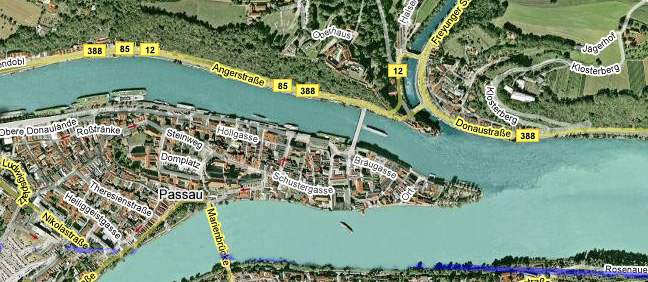
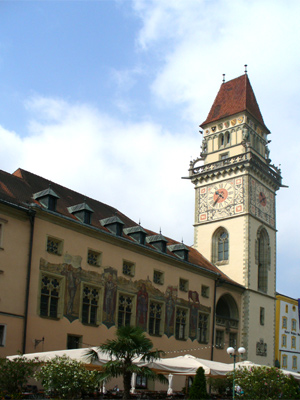
The town hall.
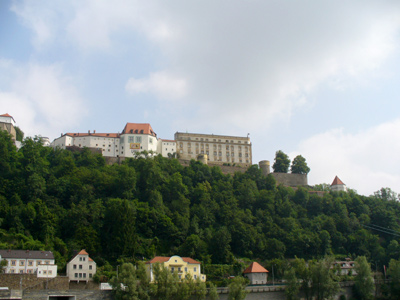
Some views of the Upper Fortress, the Oberhaus, from the 13th-16th century.
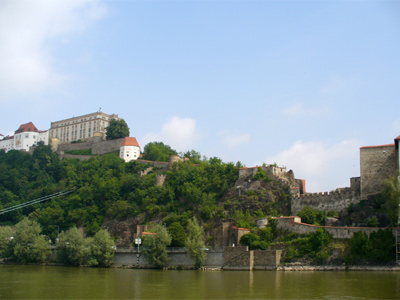
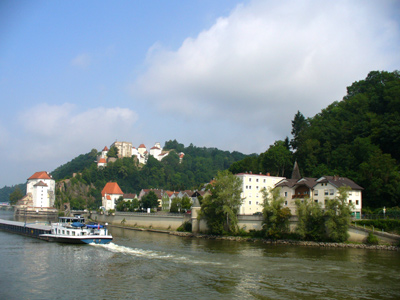
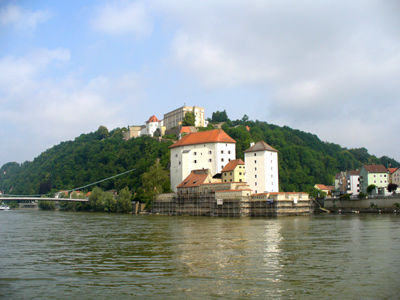
The Lower Fortress, the Niederhaus.
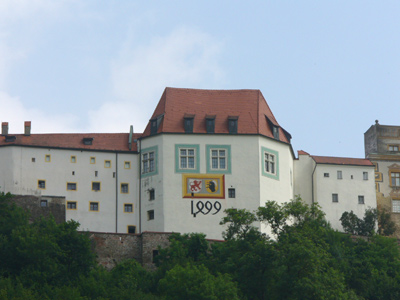
This part of the Upper Fortress, built in 1499. Note the representation of the 4 as half of an 8.
Dom St. Stephen
This late Gothic cathedral was destroyed by fire in the 17th century. The greater part of it was rebuilt in the Baroque style.
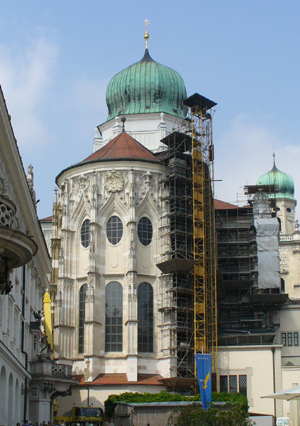
The rear of the Dom in the process of being cleaned.
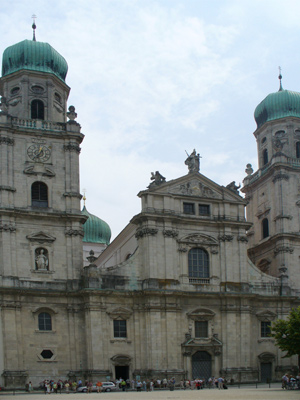
The front of the Dom St. Stephen.
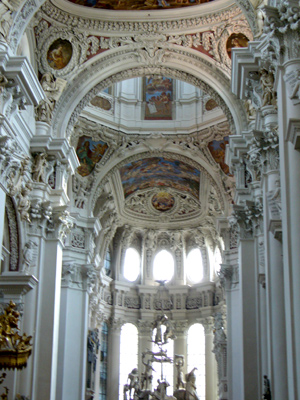
The interior of the Dom with its many frescoes and much stuccowork.

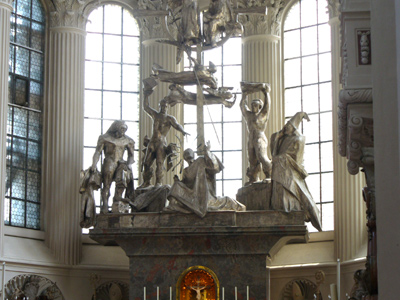
The high altar is modern (1853) and represents the stoning of Stephen, the first Christian martyr.
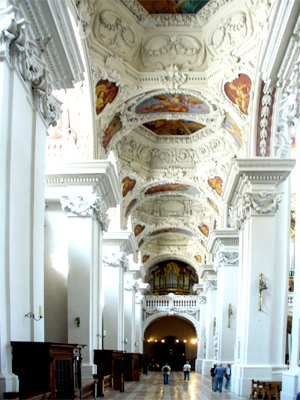
One of the side aisles of the cathedral.
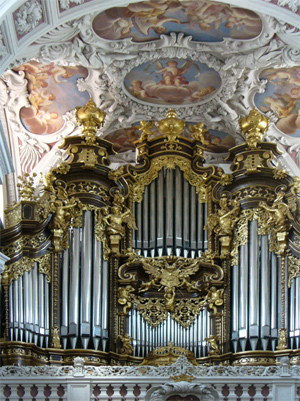
We were fortunate to be able to attend an organ concert here. The organ, rebuilt in 1928, has 17,388 pipes and 231 stops and is the largest in the world. The concert began with a prelude and fugue by Lübeck, then 4 movements of a Fantasy by Kucharz, followed by three Bach pieces: the second was "Jesu, Joy of Man's Desiring" and the last the Toccata and Fugue in D Minor.
Upper Fortress
In a free afternoon, Elizabeth and I hiked up to the Upper Fortress.

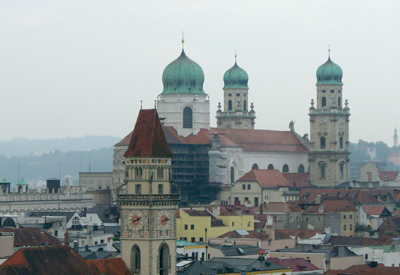
As we went higher, we got better views of the city.


From the different colors of the water, we could see the confluence of the Danube on the left and the Inn on the right. We could also see our ship from this point.
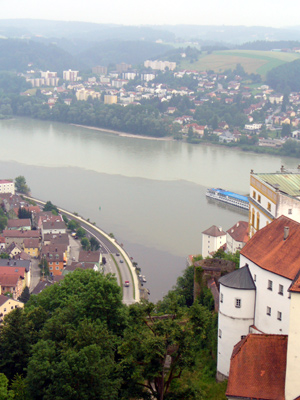
From an even higher point, we could see the water from the Ils River as well, the darker water on the far left.
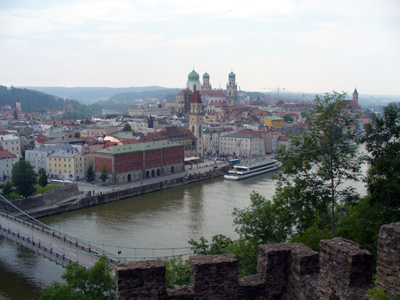
Other views of the city on the hike down.
